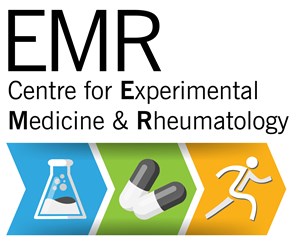About the cohort
Human RNA-sequencing data
This website provides access to a disease-control cohort of sicca-non specific sialoadenitis and Sjogren’s disease patients.
All analyses are derived from a curated salivary gland and blood RNA-sequencing baseline-only dataset with accompanying clinical data.
All the figures shown on this website can be downloaded in high, publication-ready resolution.
To enable downloading, please ask for login credentials to Elena Pontarini (e.pontarini@qmul.ac.uk) or Elisabetta Sciacca (e.sciacca@qmul.ac.uk).
How to cite
E. Pontarini et al., ‘Transcriptomic profiling of Sjögren’s disease salivary
glands identifies signatures associated with both follicular and extrafollicular
responses linked to rheumatoid factor and anti-La/SSB seropositivity’,
Ann Rheum Dis, 2025, doi: https://doi.org/10.1016/j.ard.2025.07.021.
Cavallaro, G., Sciacca, E., Pontarini, E., & Lewis, M. (2025).
Transcriptomic profiling of Sjögren's disease salivary glands https://sjogren.hpc.qmul.ac.uk/
This shows a three-way differential gene expression analysis on baseline synovial biopsies of patients classified considering treatment switch: patients who responded to rituximab after failing tocilizumab (pro-RTX, blue), patients who responded to Tocilizumab after failing Rituximab (pro-TOC, yellow) and patients who failed both drugs sequentially (refractory, red). Blue genes have a significant change (q < 0.05) in patients who failed tocilizumab but responded to rituximab (pro-RTX). Gold genes indicate a significant change in patients who failed rituximab but responded to tocilizumab (pro-TOC). Green genes indicate significance in pro-RTX and pro-TOC patients. Red genes are significantly upregulated in refractory patients, who failed both drugs. Grey genes are not significantly changed, or not specific for any group of patients.
This shows a three-way differential gene expression analysis on baseline synovial biopsies of patients classified considering treatment switch: patients who responded to rituximab after failing tocilizumab (pro-RTX, blue), patients who responded to Tocilizumab after failing Rituximab (pro-TOC, yellow) and patients who failed both drugs sequentially (refractory, red). Blue genes have a significant change (q < 0.05) in patients who failed tocilizumab but responded to rituximab (pro-RTX). Gold genes indicate a significant change in patients who failed rituximab but responded to tocilizumab (pro-TOC). Green genes indicate significance in pro-RTX and pro-TOC patients. Red genes are significantly upregulated in refractory patients, who failed both drugs. Grey genes are not significantly changed, or not specific for any group of patients.
This shows a three-way differential gene expression analysis on baseline synovial biopsies of patients classified considering treatment switch: patients who responded to rituximab after failing tocilizumab (pro-RTX, blue), patients who responded to Tocilizumab after failing Rituximab (pro-TOC, yellow) and patients who failed both drugs sequentially (refractory, red). Blue genes have a significant change (q < 0.05) in patients who failed tocilizumab but responded to rituximab (pro-RTX). Gold genes indicate a significant change in patients who failed rituximab but responded to tocilizumab (pro-TOC). Green genes indicate significance in pro-RTX and pro-TOC patients. Red genes are significantly upregulated in refractory patients, who failed both drugs. Grey genes are not significantly changed, or not specific for any group of patients.
This shows a three-way differential gene expression analysis on baseline synovial biopsies of patients classified considering treatment switch: patients who responded to rituximab after failing tocilizumab (pro-RTX, blue), patients who responded to Tocilizumab after failing Rituximab (pro-TOC, yellow) and patients who failed both drugs sequentially (refractory, red). Blue genes have a significant change (q < 0.05) in patients who failed tocilizumab but responded to rituximab (pro-RTX). Gold genes indicate a significant change in patients who failed rituximab but responded to tocilizumab (pro-TOC). Green genes indicate significance in pro-RTX and pro-TOC patients. Red genes are significantly upregulated in refractory patients, who failed both drugs. Grey genes are not significantly changed, or not specific for any group of patients.
About the cohort
This website provides access to a disease-control cohort of sicca-non
specific sialoadenitis and Sjogren’s disease patients.
All analyses are derived from a curated salivary gland and blood RNA-sequencing baseline-only dataset
with accompanying clinical data.
This also website acts as supplementary material for:
E. Pontarini et al., ‘Transcriptomic profiling of Sjögren’s disease salivary
glands identifies signatures associated with both follicular and extrafollicular
responses linked to rheumatoid factor and anti-La/SSB seropositivity’,
Ann Rheum Dis, 2025, doi: https://doi.org/10.1016/j.ard.2025.07.021.
Credits
Website development and implementation by Giulia Cavallaro, Elisabetta Sciacca and Myles Lewis.Data curation carried out by Elena Pontarini.
How to Cite
E. Pontarini et al., ‘Transcriptomic profiling of Sjögren’s disease salivary glands identifies signatures associated with both follicular and extrafollicular responses linked to rheumatoid factor and anti-La/SSB seropositivity’, Ann Rheum Dis, 2025, doi: https://doi.org/10.1016/j.ard.2025.07.021.Cavallaro, G., Sciacca, E., Pontarini, E., & Lewis, M. (2025). Transcriptomic profiling of Sjögren's disease salivary glands https://sjogren.hpc.qmul.ac.uk/

